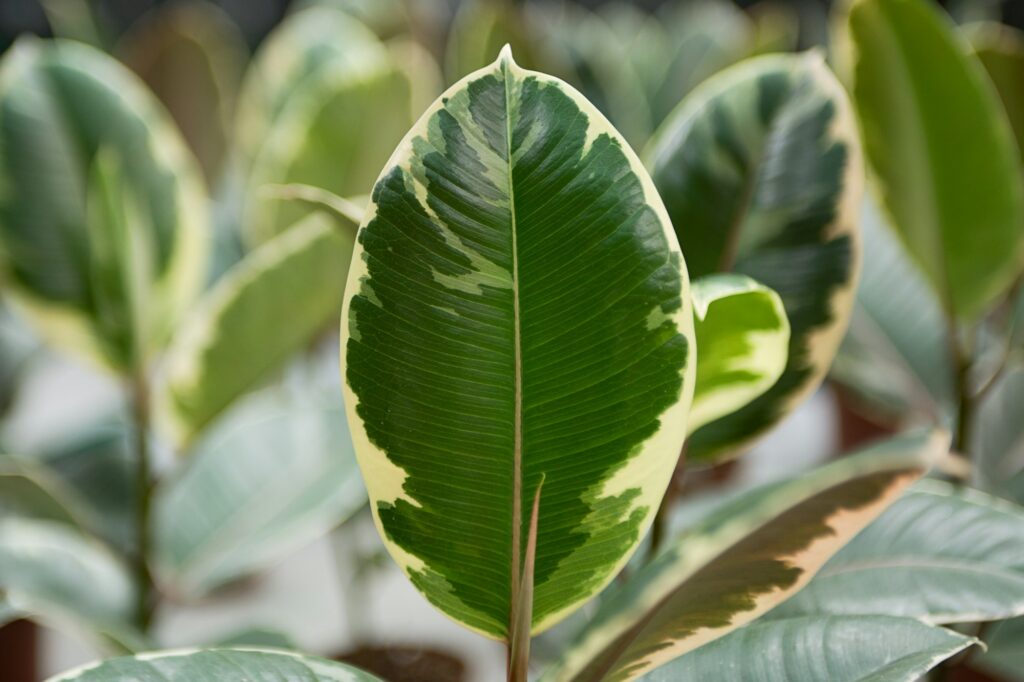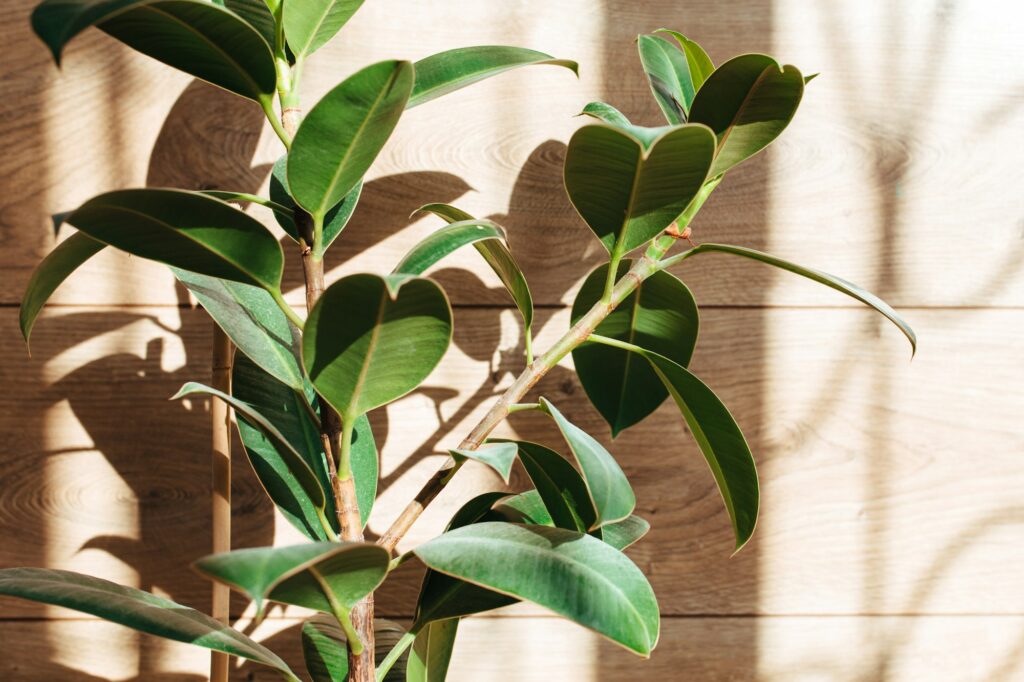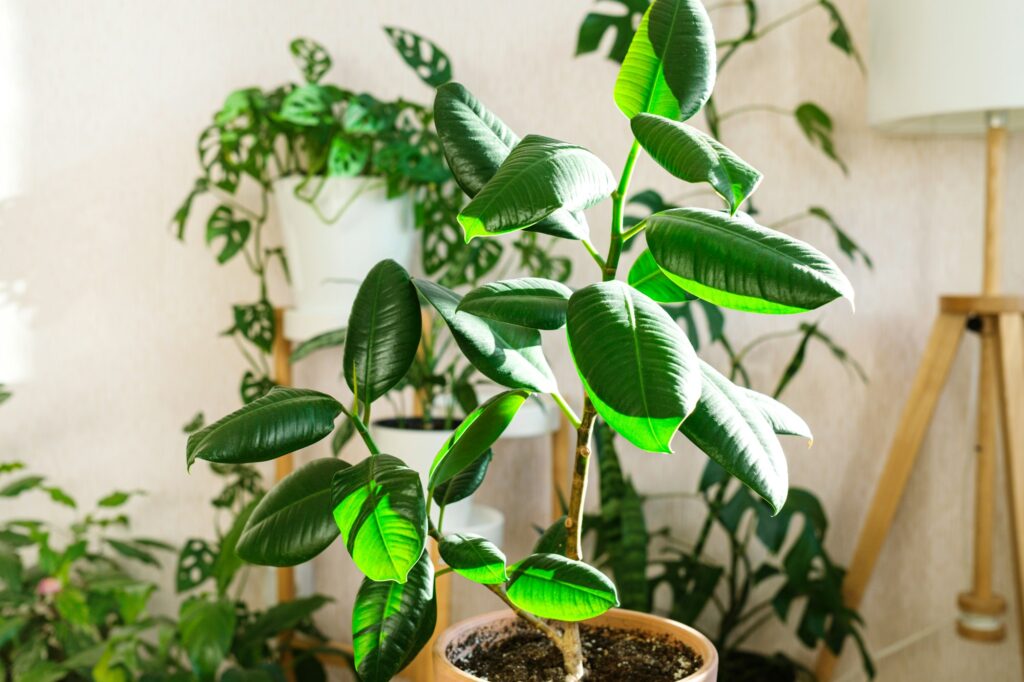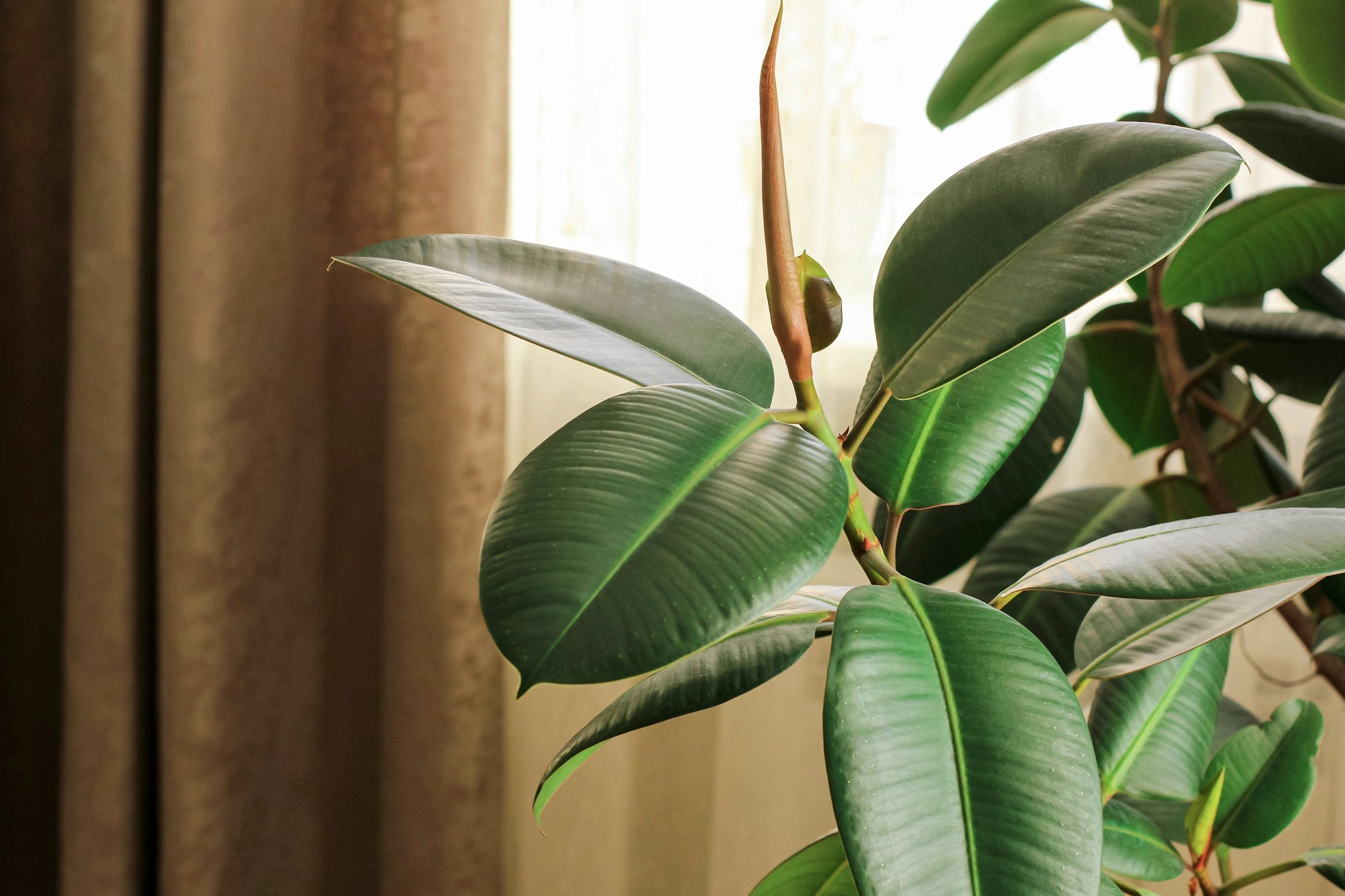Rubber plants, or Ficus elastica, are a favourite among indoor plant enthusiasts for their bold, glossy leaves and impressive size. They make a stunning statement in any room, but like all houseplants, they require a bit of TLC to truly thrive. Here’s a guide to help you care for your rubber plant and keep it looking fabulous.
Light Requirements
Rubber plants love bright, indirect light. Think of them as the Goldilocks of the plant world—not too much, not too little, but just right. A spot near a window with filtered sunlight is perfect. Direct sunlight can scorch their leaves, while too little light can lead to slow growth and leaf drop. If you notice your plant leaning toward the light, rotate it every few weeks to ensure even growth.

Watering Schedule
When it comes to watering, rubber plants like a consistent routine. Allow the top inch of soil to dry out between waterings. Stick your finger in the soil; if it feels dry, it’s time to water. Overwatering can lead to root rot, a common issue for rubber plants. During the growing season (spring and summer), you might need to water more frequently. In the cooler months, reduce watering as the plant’s growth slows down.
Humidity and Temperature
Rubber plants prefer a humid environment. If the air in your home is dry, especially in winter, consider placing a humidifier nearby or setting the plant on a tray of pebbles filled with water. Keep your rubber plant in a warm spot, ideally between 60-75°F (15-24°C). Avoid cold drafts and sudden temperature changes, as these can stress the plant.
Soil and Fertilization
A well-draining potting mix is essential for rubber plants. A mix designed for houseplants with added perlite or sand works well. During the growing season, feed your plant with a balanced liquid fertilizer every four weeks. In fall and winter, when growth slows, you can cut back on fertilization.

Pruning and Cleaning
Pruning helps your rubber plant maintain a desirable shape and encourages bushier growth. Trim any leggy or overgrown branches with clean, sharp shears. If you notice dusty leaves, give them a gentle wipe with a damp cloth to keep them shiny and allow for better photosynthesis.
Common Issues and Solutions
- Yellow Leaves: This could be a sign of overwatering. Check your watering schedule and adjust as necessary.
- Brown Leaf Tips: Often a result of low humidity or inconsistent watering. Increase humidity and ensure your watering habits are consistent.
- Pests: Rubber plants can sometimes attract pests like spider mites or scale. If you notice any tiny invaders, treat your plant with insecticidal soap or neem oil.
Repotting Your Rubber Plant
Rubber plants generally need repotting every 1-2 years, or when you notice roots growing out of the drainage holes. Choose a pot that is one size larger than the current one and refresh the potting mix. Repotting is best done in the spring when the plant is actively growing.
Personal Anecdote
I remember the first time I brought home a rubber plant. I was captivated by its glossy leaves and elegant stature. After a few weeks, I noticed it started dropping leaves. A quick adjustment to its light exposure and watering schedule made all the difference. Now, it’s the centerpiece of my living room, and guests always comment on how lush and healthy it looks. It’s a plant that truly rewards you for paying attention to its needs.
Caring for a rubber plant can be a rewarding experience. With the right conditions and a bit of love, your rubber plant will flourish and bring a touch of the tropics into your home. Happy gardening!






